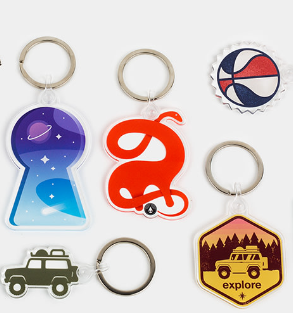 Image Source: dove-tail.com.au/
Image Source: dove-tail.com.au/
There is no doubt that a strong social media presence is the key to see your brand fly high. However, devising an expansion strategy can seem like a difficult venture.
It is essential to know how your brand compares to your competitors’, to gain a larger market share.
Let’s have a look at how to check your brand performance on Facebook, Twitter, and Instagram and beat your competitors.
What Are Your Benchmarks?
While depending on your brand the benchmarks can change, there are some all-industry metrics to take into consideration.
These will help you understand whether your brand is dynamic enough to be a valid competitor in the social medial landscape. Moreover, your personal benchmark can be moved and advanced along with your brand’s growth.
For Facebook, Twitter, and Instagram, some of the main metrics to consider are:
- Posts per day
- Posts per week
- Engagement rate
- Top hashtags by engagement rate
This change depending on the industry you are in. For example, the Facebook post per day metric is as low as 0.6 for food and beverages pages and as high as 10.4 for media brands.
Learning about these benchmarks and metrics will help you close the gap between having many followers and increasing the number of paying customers.
Who Are Your Competitors?
The social media landscape is highly competitive. To avoid getting lost in the maze of high-flying brands, you should identify who your main competitors are. Start by analyzing who is in a similar industry and market position as you.
Some of the tricks to identify your competitors are:
- Head to the same hashtags as the ones you are using to see other similar pages.
- Among these, pick the ones that are relevant and close to your position.
- Identify the brands that have a similar number of followers as yours. (Or as many as you want to have in this face to use them as benchmarks).
- Check those brands that interact with their audience.
To see how these brands, as well as yours, are positioned on the market, use a SWOT analysis. In this way, you can analyze both yours and their weaknesses, strengths, opportunities, and threats.
Create A Full Competitive Analysis
Devise a complete competitive analysis if you have ever done it before can seem a difficult venture. Especially because the social media landscape is so wide and intricate, it can be hard to take all factors into consideration.
However, we can follow a not hard scheme for each platform to understand the nature of our competitors.
Are you wondering how helpful it is to spend time creating a working competitive analysis? You should know that this simple tool can help you:
- Know more about what your competitors do
- What is the past, present, and potentially, the future of your competitors?
- The winning technique that made them who they are now
- See if there is a gap in their strategy or within your own.
Keywords, identity, number and nature of followers, audience, activity are the main metrics to consider in this analysis. Let’s have a look at the basis to start analyzing your competitors on each of the main platforms.
a) Facebook
Facebook is one of the most used social media platforms and growing each year. It is essential to understand what your competitors are on this platform. Let’s have a look at what to keep in mind when looking at your competitors on this platform:
- Page feature – this is one unique characteristic of Facebook. You can enable or disable many features such as the shop section on the top of the page. Note down all the features that you think are winning.
- Audience and Interaction – using specific tools, you will be able to see the post volume and comments of each of your competitors. Use this as a benchmark.
- Followers – it is an important number, but your analysis should not stop here!
b) Instagram
Instagram has become one of the fastest-growing platforms out there. However, there is not much public data that you can use for your analysis. In this case, aim at gathering:
- Audience increase – follow your competitors for a while and check how their audience is growing.
- Hashtags – check what hashtags your competitors are using. This is their target market. For example; if you have a business of selling custom enamel pins, have a look at your competitors’ Instagram page. You need to notice what hashtags they are using. You can use them too for better exposure.
- Post frequency – check how many times a week your competitors are posting.
- Interaction – note whether your competitors reply to the comments of their followers.
c) Twitter
While you can use the above tips to get an idea of your competitors on Twitter, the platform is very secretive!
There are specific professional tools that can be used to dig in your competitors’ data. However, if the same competitors are on more than one platform, analyzing their Twitter accounts can:
- Give you information on the target audience – age, personas, interests.
- Give you information on their interaction style and influence.
- Their weekly-monthly strategy.
Check Your Competition Activity
Independently from which platform you are using, one of the main things you should keep up with if your competitors’ activity. How often do they post? How often do they reply to comments? How quickly do they respond to private messages?
All this will give you an idea of how close the page is with its followers and whether this can represent strength or weakness for you. Keep in mind that more loyal followers, especially if they are paying customers, can be very loyal to one brand.
Moreover, you should note what is the winning technique of top brands. How do they interact with the public? Who do they target? What strategies do they use to sell their products?
What Is Your Competition’s Content?
The quality of the content posted by your competition is just as important as their activity. This will give you an idea if they are following a pattern. Moreover, checking comments and likes, you will have an overlook of your audience’s interests.
By using your competitors’ knowledge, you will be able to devise a posting strategy that includes only relevant, up to date content.
Alongside, check whether each post is followed by an appropriate caption that includes a call to action. Is this effective? Can it be done better? What are the captions that receive more responses?
Note all this down to have a ready to use, bulletproof strategy! Remember that your content quality and quantity need to adapt to your market’s needs. These tend to change according to trends, so don’t forget to keep an eye out for updates!
Organize the Data
Once you have gathered all the facts about your competitors, it is time to organize it. In order to make sense out of all the numbers you now have in front of you, start by creating a simple-to-read scheme. This must include:
- Each competitor’s name
- Size – number of followers, social media pages
- Activity – how many posts a day?
- Interaction – on a scale of 1 to 10, how engaging is the brand
- Main hashtags and keywords used.
- Content quality and layout used – use a similar scale as the one above
- Has the page grown since you started analyzing it?
- How many social media pages does your brand have? Is it active on all of them?
Read the Facts!
Now that you have all the information you might need in front of you, it is time to read them! Knowing how to do so can reveal basic trends, changing customers’ interest, and industry fads. This is incredibly important for you to set up a relevant and updated page.
If you already have an existing page, this scheme will give you an idea of where you would like to see it. If you don’t already have one, this analysis will tell you where it should be.
To increase your chances of success, identify the closest competitors to your size and goal. Use their weaknesses to create a better strategy. However, don’t forget to use better pages than yours as a benchmark to reach better goals each month1.
Conclusion
Social media pages are so many that it can seem like a maze. However, through thorough competitor analysis, you will be able to see where your brand stands. Moreover, you can check what your competitors are and devise a winning strategy.
Awesome! Share To :
Receive our news



